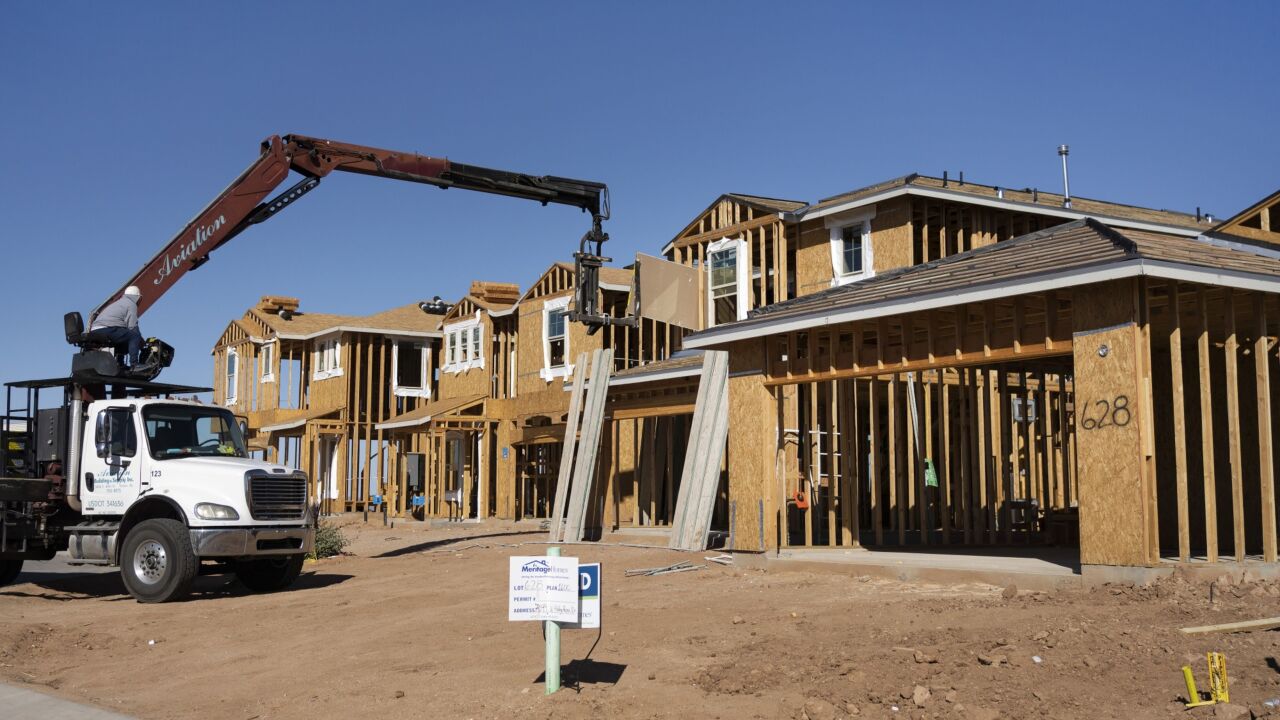The New Orleans housing market is strengthening, with home prices climbing in most neighborhoods and the number of vacant or blighted properties shrinking, according to a new analysis.
But some neighborhoods have not kept up with the city's overall progress. In others, values have accelerated so quickly that longtime residents are at risk of being priced out.
And a family of four earning about $63,300 — the city's median family income — cannot afford to live in many sought-after neighborhoods without a government subsidy, the data show.
Families who make less than that would be excluded from even greater portions of the city if no subsidies are available.
The city's so-called "market value analysis," which tracks these trends and others, is prepared every three years by the Reinvestment Fund, a Philadelphia-based entity that helps inform planning and investment decisions in cities and states nationwide.
Some of the data validate long-held assumptions and anecdotal evidence about the housing market, while others reveal new patterns.
"Knowing all this ... sort of triggers (city) agencies to start thinking about, 'What are the tools that we have available to arrest decline, to sort of stabilize it, and put it in a good place?' " said Ira Goldstein, president of the Reinvestment Fund's policy solutions team.
The group examines a slew of government and real estate data — including home sales, foreclosures, construction and renovation permits and other information — applicable to each U.S. Census block group, on average about 39 city blocks. It verifies the data it receives through neighborhood visits, a process that takes up to six months.

It then groups the neighborhoods by common characteristics, which results in a spectrum. Those with the highest median home sale prices are usually considered the city's strongest neighborhoods, while those with the lowest are considered the most troubled.
The analysis also looks at changes in neighborhoods over time, the risk of resident displacement in certain neighborhoods, affordability of neighborhoods and other indicators.
Agencies such as the New Orleans Redevelopment Authority then use the data to help make decisions on where to incentivize affordable housing units or commercial development. The city has used these reviews since 2012.
The latest review shows that overall, home sale prices in the city have risen by nearly a third since 2015, the year of the group's last study of the New Orleans market.
Homes in some neighborhoods, such as parts of the Lower Garden District, Irish Channel and Audubon, have appreciated more rapidly than others — by more than $150,000 in some cases. Parts of Mid-City and Lakeview have followed the same trend.
Most New Orleans East neighborhoods, meanwhile, have seen values rise by less than $40,000. Some — such as Read Boulevard East and slices of Little Woods — have seen values rise by up to $150,000, while parts of others — Plum Orchard, Pines Village and West Lake Forest — have seen declines.
"In New Orleans East, it really is the story of not keeping pace with the rest of the city," said Emily Dowdall of the Reinvestment Fund.
Citywide, the number of blighted and empty properties has decreased, while the city's homeownership rate has remained stable — two signs of market strength.
However, there's been a decline in the number of permits for new or renovated construction since 2015, indicating the flurry of activity some neighborhoods have seen is slowing.
Foreclosures are also up by more than a fourth since 2015, though they are still not as high as during a 2012 peak.
The report also examines areas where the "displacement risk" for some residents has increased over the past seven years. The risk is higher today in Bayou St. John, Mid-City, parts of Bywater and the Irish Channel — all neighborhoods where homes are on the market for a median $348,000.
But there's also a threat in some areas of Central City, where the median sales price is about $131,000, and in parts of the Leonidas neighborhood with similar home prices, because values in surrounding areas are rising.
Many of the neighborhoods where the risk of displacement has risen also have high concentrations of short-term rental permits. Goldstein said the correlation isn't that cut-and-dried, however.
"Our data on short-term rentals cover a period of only about the last eight months," he said. "The increases in displacement risk are measured over a much longer period of time. So it is not likely that the (rentals) are the single driving force behind any observed changes."
More likely, owners applied for and received short-term rental permits in neighborhoods where home values were already rising, he said.
The Reinvestment Fund analysis, which is based on home sales, also doesn't capture areas where homes were bought at a low price and renovated, then rented out to new tenants at a higher price for either the long or short term.
That has been the case in Treme, though Treme is not listed as a neighborhood with increased displacement risk, said Seth Knudsen of the Redevelopment Authority.
Breonne DeDecker of the Jane Place Neighborhood Sustainability Initiative — a group that believes the economic benefits of Airbnb rentals lead landlords to kick out longtime tenants — also offered a measured take.
More displacement has occurred in areas where there are mainly local renters, she said, "and in neighborhoods that are close to downtown job centers, and in neighborhoods that have had a spike in investment property, and in neighborhoods that have a spike in short-term rentals. All of these things are interrelated."
To help mitigate the risk of displacement, the city needs to invest in community land trusts and permanently affordable housing, DeDecker said, "to make sure affordable opportunities are not just accessible to one family, but to generations."
She praised a move by the newly seated City Council to halt the issuance of licenses for "temporary" short-term rentals. Those licenses allow entire homes to be rented out for up to 90 days a year; they are the city's most common and most profitable type of short-term rentals.
Another point of note: just how many city neighborhoods are out of reach for families earning the median income in the city. While a number of so-called middle neighborhoods are available to those families, areas with the highest median home prices — including Mid-City, Lakeview, parts of Gentilly Terrace and many neighborhoods along the Mississippi River — are not.
Even fewer city neighborhoods would be available to families with lower incomes, if not for housing voucher programs and other subsidies that benefit at least some of those families.
The Reinvestment Fund analysis will help the New Orleans Redevelopment Authority and other local agencies direct financing for affordable housing and commercial activity, said Brenda Breaux, executive director of the authority. "This is really a tool that we use at NORA in making our investments and recommendations to our board as to where we need to be."





